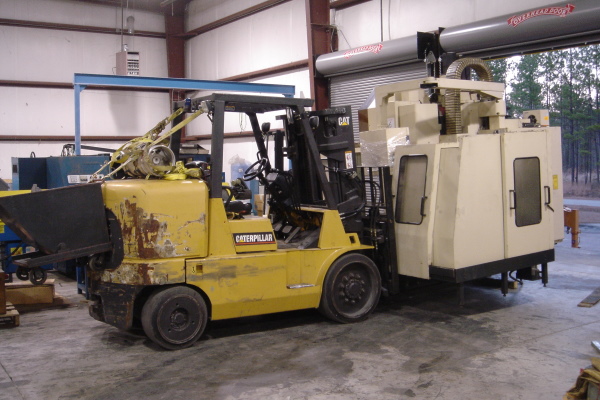I see now why no one mentions the word "forklift"on this forum
But the fact remains who would hire a rigger without one.
Just one weapon in a whole arsenal that includes:toe jacks, conventinal jacks,diaphram jacks,portapowers, wedges,skates, cribbing,air bearings, cranes, slings. stealplate, uhmw, ice................
Now pick you one of them and flame on it,
your clueless
the argument was never about forklifts
everyone uses forklifts
it was about how to install a leveling pad on a fadal
which you evidently have little experience at.
so go drive your forklift around the parking lot and leave this to people that now how to do it with out tearin' sht up or pissin' money down the drain on equipment you don't need.
hell
your last statement is debate for the opposition, the reason riggers carry all that stuff is because forklifts ain't always the answer
forklifts are for carrying sht
and while we're at it, do you suppose a guy that has a forklift big enough to lift a vmc would be askin' how to do it.
no
he'd do like you
he'd stuff a fork in it bang it around a couple times puttin' it down.
then spend 3 hours getting the thing back in position
like you.
this sight isn't anti-anything other than people talkin sht like they know when they don't.
just because you've watched riggers good enough to do the stuff your suggesting doesn't mean its the easiest best way to do it.
if that was the case we should all quit usin' stairs, we should just jump 5 foot vertical like the guys in the NBA
how about this one
how about i call the worlds greatest rigger (you pick)
and i tell him i want to switch out the leveling pads on a 8 thousand pound mill
what do you suppose he's gonna haul across town, a fckin Taylor,
not,
he's gonna bring a jack and maybe a pry bar and be done before you could unload the forklift
duh!!




